Lockheed Martin F-22 Raptor
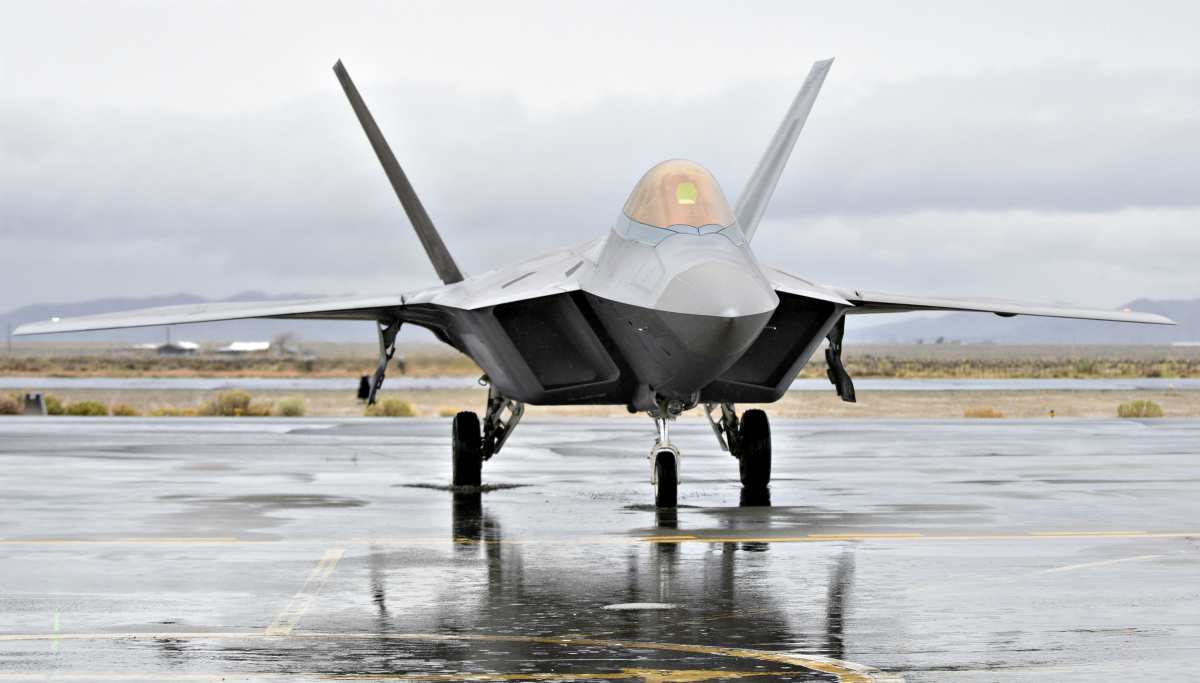
Entering service in 1997, the Lockheed Martin F-22 Raptor quickly set the standard for what a 5th generation fighter could be. A single-seat aircraft with twin engines, this all-weather stealth tactical fighter aircraft is battle tested and proven adept in a variety of rolls, depending on what the mission calls for.
It’s the first operational modern military aircraft to combine supercruise, supermaneuverability, stealth, and bleeding edge sensor fusion into one platform. Lockheed Martin can hang their hats on this impressive aircraft design. The avionics were state of the art at the time, as were the radar, tracking, and target acquisition systems—and they’ve continually improved since then. The dual Pratt & Whitney F119-PW-100 turbofan engines are still more than competitive, and the (highly classified) top speed may reach an estimated Mach 2.25. Combined with an effective combat range of 529 miles, the F-22 can always get where it’s needed. Additionally, its flexible armament can be configured for a variety of missions. The F-22 Raptor set a tough standard to beat.
Lockheed Martin F-35 Lighting II
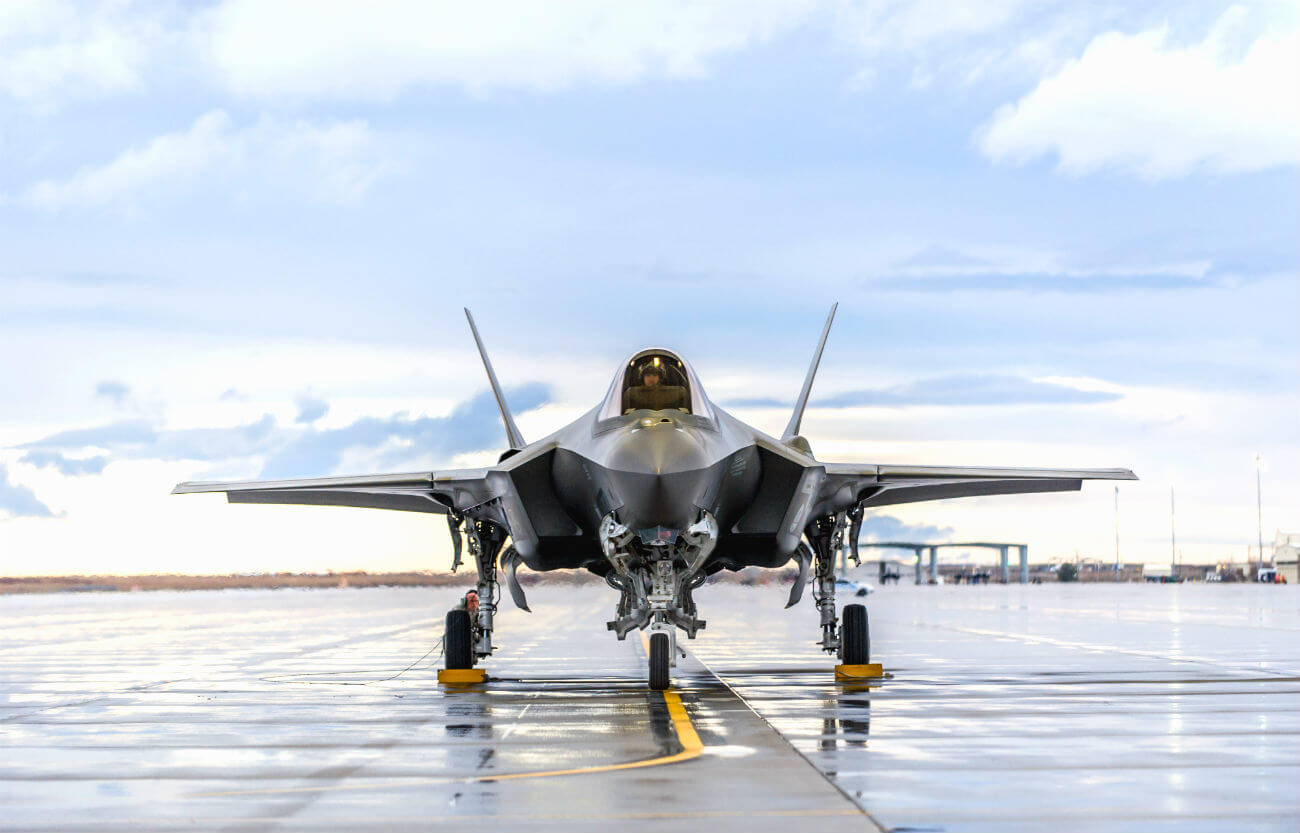
The F-35 Lighting II is another Lockheed Martin innovation. It’s a single seat, single engine all-weather stealth fighter. The F-35 is designed to perform both ground attack and air defense missions. The first United States Air Force F-35 squadron activated in August of 2016.
The F-35 is a product of the Joint Strike Fighter Program. This program aimed to develop a new multirole fighter that could replace a number of existing fighters already in service. To that end, the designers knew that the F-35 would have to be flexible – not just in armament but in the overall design. For example, the F-35B variant is vertical takeoff and landing capable, while the F-35C is designed to operate off of aircraft carriers. Additional variations will come to light as the F-35 enters the export market. Countries like Turkey and the UK are seeking to put them into service. Soon we’ll get a real sense of everything this modern military aircraft can be.
Compare the F-35 and the F-22 side-by-side here.
Chengdu J-20
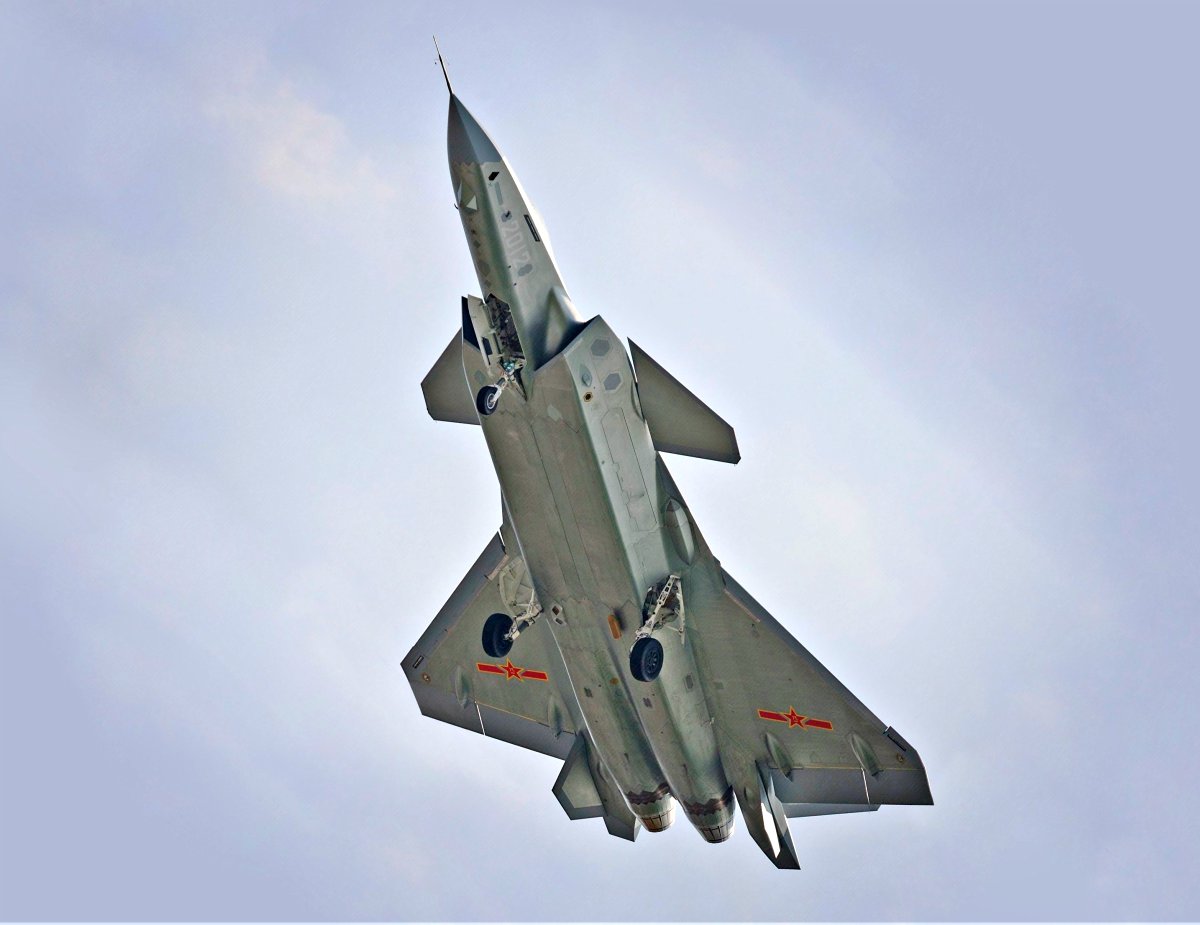
The US isn’t the only country in the next-gen stealth fighter game. The People’s Republic of China is trying to cement its place as a rising global power by expanding its military capabilities. Chengdu J-20 is a twinjet multirole stealth fighter that entered service in 2016.
Per the general policies of the People’s Liberation Army Air Force, we don’t know a whole lot about the J-20. The best guess is that the modern military aircraft aircraft is designed to operate as a long-range air superiority fighter with perhaps ground strike capability as a secondary consideration. Further speculation abounds that Russia’s MiG aviation company played a role in the development of the J-20. However, we’re dealing with a paucity of information out of the PLAAF. The J-20 hasn’t made its battlefield debut, so we will have to wait and see what this thing is really capable of.
Sukhoi PAK FA
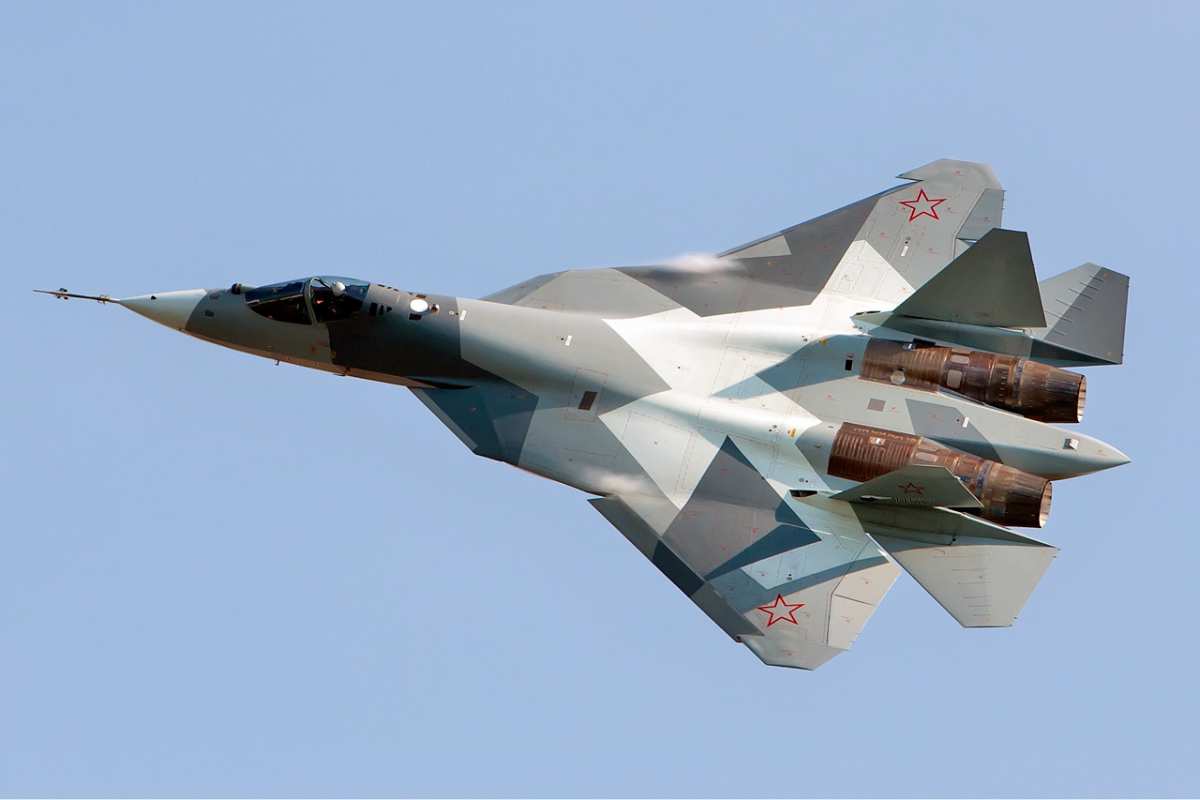
The Sukhoi PAK FA is Russia’s attempt to maintain a competitive air presence into the 21st century. By all accounts, it’s a pretty good one.
The PAK FA is the first operational stealth aircraft in Russian history and a big step forward for that nation. It is supercruise and supermaneuverability capable, which is no small engineering feat. Russian officials claim that the aircraft is also stealth-capable, though we know a great deal less about what that will mean in practice. It’s built around a pair of Saturn AL-31 engines produced by Lyulka. That’s the same powerplant found in the Chengdu J-20. This information fuels speculation about a collaborative development. With an estimated top speed of Mach 2.0, this modern military aircraft will be an interesting addition to Russia’s arsenal.
Eurofighter Typhoon

A twin-engine multirole fighter with a striking canard-delta wing design, the Eurofighter Typhoon is the product of the European Union’s desire for a modern military aircraft that would let EU forces remain competitive on the global battlefield. A joint development of companies like BAE Systems, Alenia Aeromacchi, and the Airbus group, the Typhoon entered operational service in 2003.
The Typhoon is unique in that it is perhaps the last fifth-generation fighter to be produced without stealth capabilities. However, every other effort was made to reduce its radar cross-section. Beyond that, everything about the Typhoon is state of the art, from the HUD instrumentation to the avionics to the diversity of weapons systems that the Eurofighter is capable of carrying. The broad wing section incorporates a number of hardpoints for weapons mounting, enabling the Typhoon to function beautifully in any role.
Dassault Rafale

The word “Rafale” means “a burst of weapons fire” in modern French military jargon. The Dassault Rafale more than lives up to its name. The Rafale is designed as an omni-role fighter – it can be configured to perform any mission. The missions of these modern military aircraft include: air supremacy, interdiction, aerial reconnaissance, ground support, in-depth strike, anti-ship strike and nuclear deterrence.
First introduced in 2001, the Rafale remains a mainstay of the French military, and it’s easy to see why. Two Snecma M-88-2 turbofan engines providing nearly 12,000 lbf of thrust each allow the Rafale to easily reach speeds of Mach 1.8. Additionally, a flexible array of armament, including a variety of air-to-air and air-to-ground missiles and anti-ship missiles give the Rafale plenty of versatility. It’s no wonder that these birds perform so well in both ground-based and carrier-based settings. Battle-tested many times over, the Dassault Rafale will be a common sight in the skies for some time to come.
Sukhoi Su-35
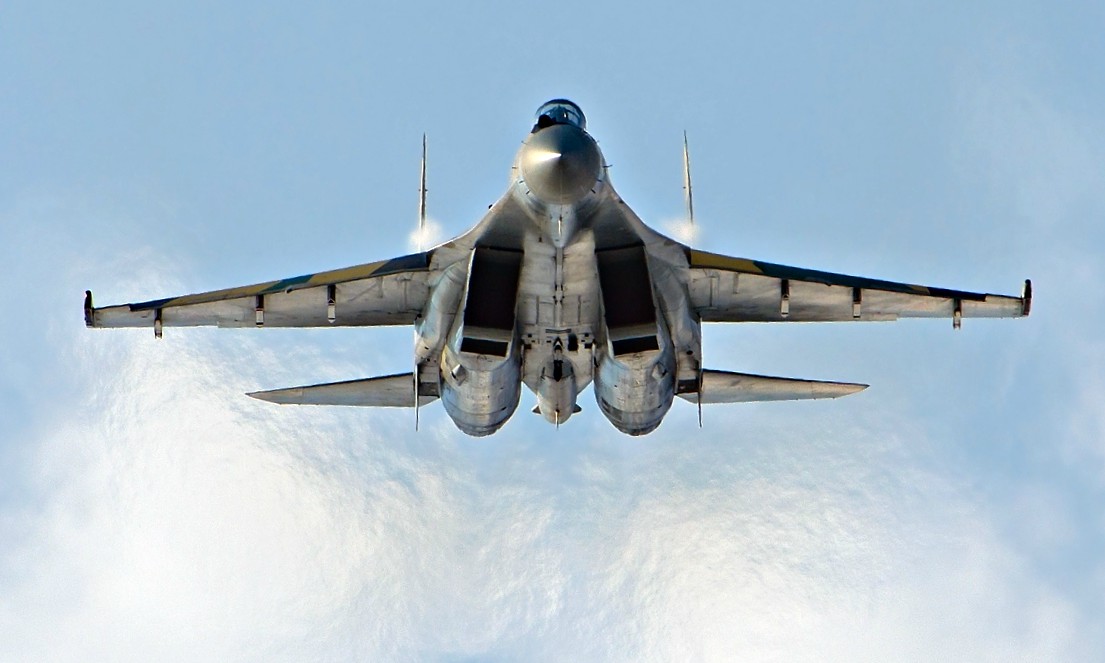
Another Russian contribution to the world of the modern military aircraft is the Sukhoi Su-35. Su-35 is a twin-engine, twin seat strike fighter which first went into service in 2014. The Su-35 is a flexible platform designed with a great many missions in mind. These include tactical bombing/attack and other interdiction roles against ground targets, naval operations, as well as long-range strike fighter capability and even reconnaissance.
The Su-35 was plagued by a long and convoluted design and development process. There’s a pretty broad gap between contracting the Su-35 and its adoption into active service. However, there were some benefits to this, including some innovations in the layout of the aircraft. The Su-35 features side-by-side seating for its two-person crew and a pressurized cabin allowing them to operate without oxygen masks during routine flight. Combined with the diversity of possible configurations and payloads, and the Su-35 remains one of the world’s best military aircraft.
McDonnell Douglas F-15 Eagle

One of the most iconic American fighters of recent memory, the McDonnell Douglas F-15 Eagle is a twin-engine tactical fighter aircraft designed for all-weather operations. Unlike the multirole fighters that dominate this list, the F-15 Eagle is designed for one purpose: gaining and maintaining air supremacy in the skies of today’s battlefields.
The F-15 first entered service in 1972 and is perhaps the most successful fighter aircraft of its time. Not only in duration of service but also in terms of battlefield efficacy. It’s tallied over 100 victories and zero losses in aerial combat. This is the bird that sets the benchmark for performance in action.
This modern military aircraft is powered by two Pratt & Whitney afterburning turbofan engines. Its top speed is somewhere north of Mach 2.5. The exact number depends on configuration and is classified. This performance rivals anything in the skies—and likely will for some time to come.
Boeing AH-64 Apache
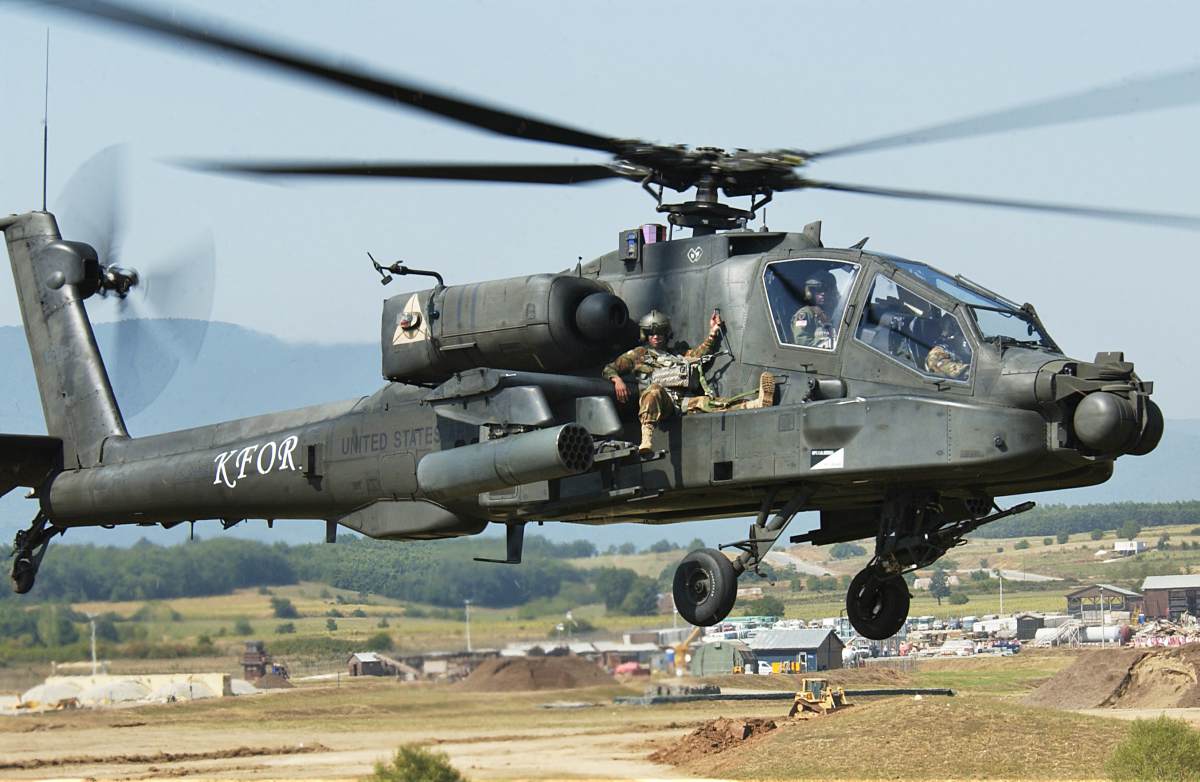
An attack helicopter in service in the US forces since 1986, the AH-64 Apache defined the modern attack role of rotary wing aircraft. Versatility and formidable armament are its hallmarks. Originally designated the Model 77, the AH-64 was intended as a replacement for the AH-1 Cobra. However, further developments expanded its various roles as weapons, avionics, and targeting systems have all evolved.
The current Apaches—the AH-64F—features improved turboshaft engines, true retractable landing gear for improved aerodynamics, greater articulation in the tail rotor, and a host of networked systems designed for the command and control needs of the contemporary battlefield. Most notably, some Apaches have been fitted with the computer systems necessary to both launch and control unmanned aerial vehicles. These drones give them a marked advantage in an increasingly automated battlefield. Expected to remain in service until at least 2040, the Apache’s place on this list of modern military aircraft is well-earned.
General Dynamics/Lockheed Martin F-16 Fighting Falcon
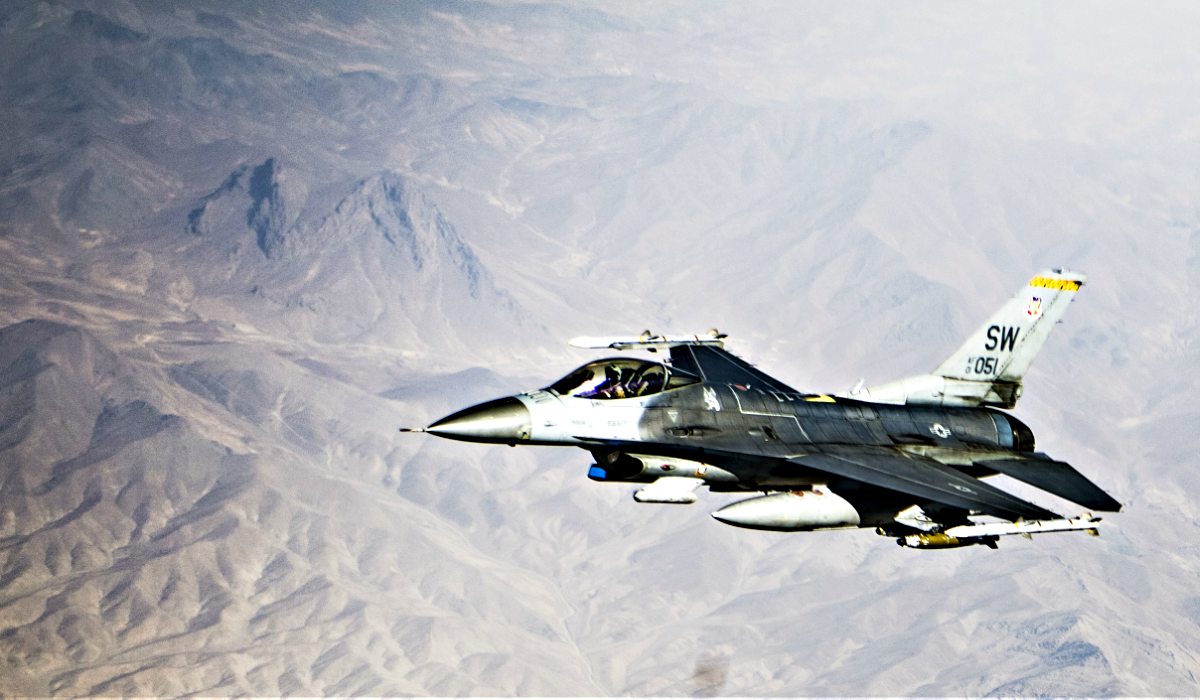
To avoid any confusion: General Dynamics sold its military aircraft division to Lockheed Martin in 1993, hence the compound naming above.
The F-16 Fighting Falcon is a single-engine multirole fighter aircraft. Initially conceived and designed as an air superiority fighter, its evolution over the years is part of its impressive combat history. The F-16 was intended to be a more cost-effective supplement to the F-15 Eagle: a smaller, more nimble aircraft designed to engage enemy aircraft at distance. However, over time operators realized the versatility of the design. General Dynamics began outfitting it with armament that allowed the F-16 to function against ground targets. This increased capability led the F-16 to become a favorite modern military aircraft of forces around the world. Israel, Pakistan, Turkey, and Egypt all employ F-16 Fighting Eagle’s. While no longer the newest thing on the block, what the F-16 lacks in novelty it makes up for in performance.
See a F-35 vs F-16 comparison here.
Boeing F/A-18E/F Super Hornet
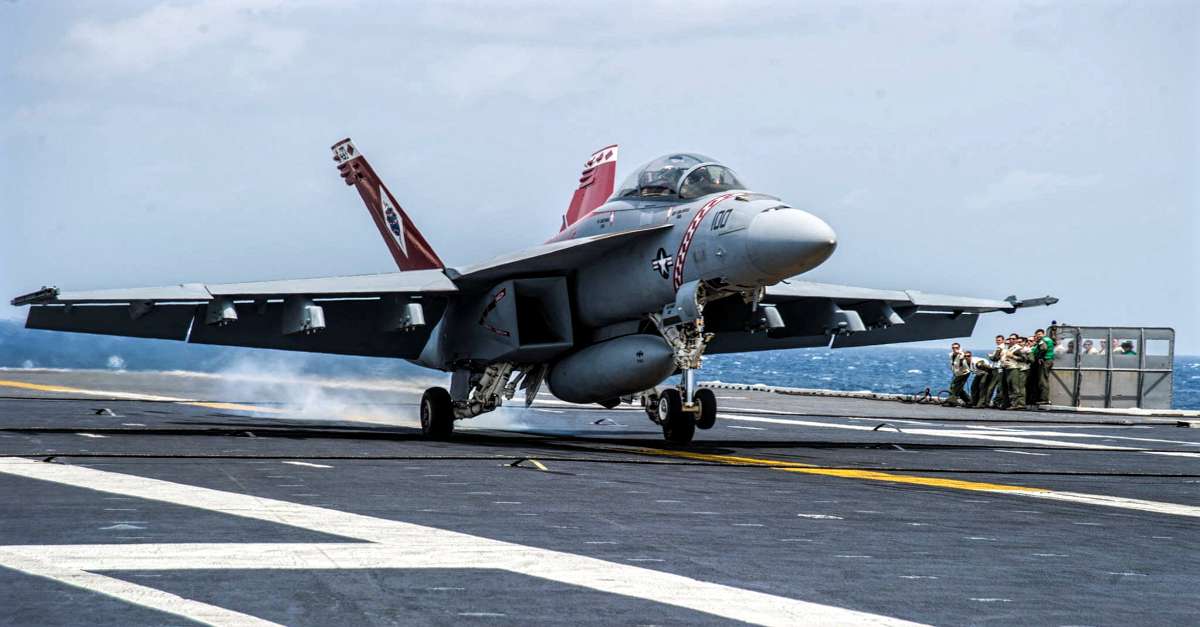
The name is a mouthful. But this carrier-capable, modern military aircraft is a favorite of the United States Navy for a very good reason.
It first entered service in 1999 as a phased-in replacement for the beloved yet aging Grumman F-14 Tomcat. The Super Hornet’s multirole capability led it to become a favorite for both carrier defense and close air support against ground targets. The Super Hornet first saw combat in the latter role. During Operation Southern Watch in 2002, two aircraft on patrol detected and engaged surface-to-air missile systems in Iraq. This began the Super Hornet’s impressive history of service in the Middle East through Operation Iraqi Freedom. It also was involved in more recent fights for control of the region against ISIS/Daesh.
The Australian Armed Forces adopted the aircraft. Additionally, the Super Hornet may apear in the arsenals of Denmark, Canada, Finland, Kuwait, and other US allies.
B-2 Spirit Stealth Bomber
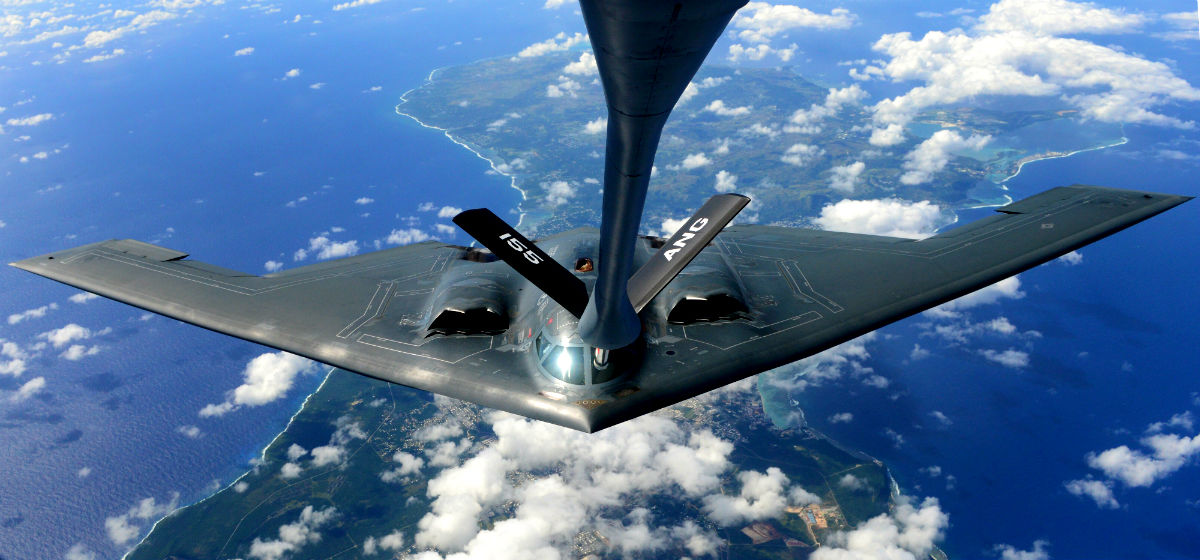
Since the project was first declassified in 1997, the B-2 Spirit has proven its might and established the importance of stealth technology in air power.
With a total program cost of nearly $45 billion dollars, the B-2’s flying wing design is more than cutting edge. The aircraft was conceived with the Cold War in mind. The B-2 can carry out deep strike missions inside enemy territory to deliver a blow to critical targets or infrastructure. It is capable of carrying both conventional munition and nuclear weapons. The swept wing design, narrow profile, and radar absorbing materials all contribute to the bomber’s legendary stealth capabilities. B-2’s stealth is so advanced that it can function as its primary defense against enemy action.
The modern military aircraft has an avionics and weapons systems that was advanced when it was designed, and has only been upgraded since then.
Tupolev Tu-160 (NATO reporting name: Blackjack)

Classified by the Russians as the Beliy Lebed or “White Swan”, the Tupolev Tu-160 is known to NATO as the Blackjack. This Soviet-now-Russian bomber has the distinction of being the largest and heaviest aircraft capable of Mach 2+ ever built. It’s the fastest bomber now in use as well as the largest and heaviest swept-wing aircraft on record. That’s a lot of achievement for one modern military aircraft. The Tu-160 engineering is truly impressive.
The basic design of the Blackjack – including its impressive variable-wing capability – has remained consistent. But the avionics, electronics, and weapons systems have been continuously upgraded, with a particularly aggressive effort at modernization starting in 2014. The fact that an aircraft that entered service in 1987 can continue to serve as a weapons platform for some of the most advanced systems on the planet speaks to the vision of its makers and the flexibility of its operators. Currently in service engaging targets in Syria, the Tu-160 remains a formidable bomber in any operation.
Boeing B-52 Stratofortress
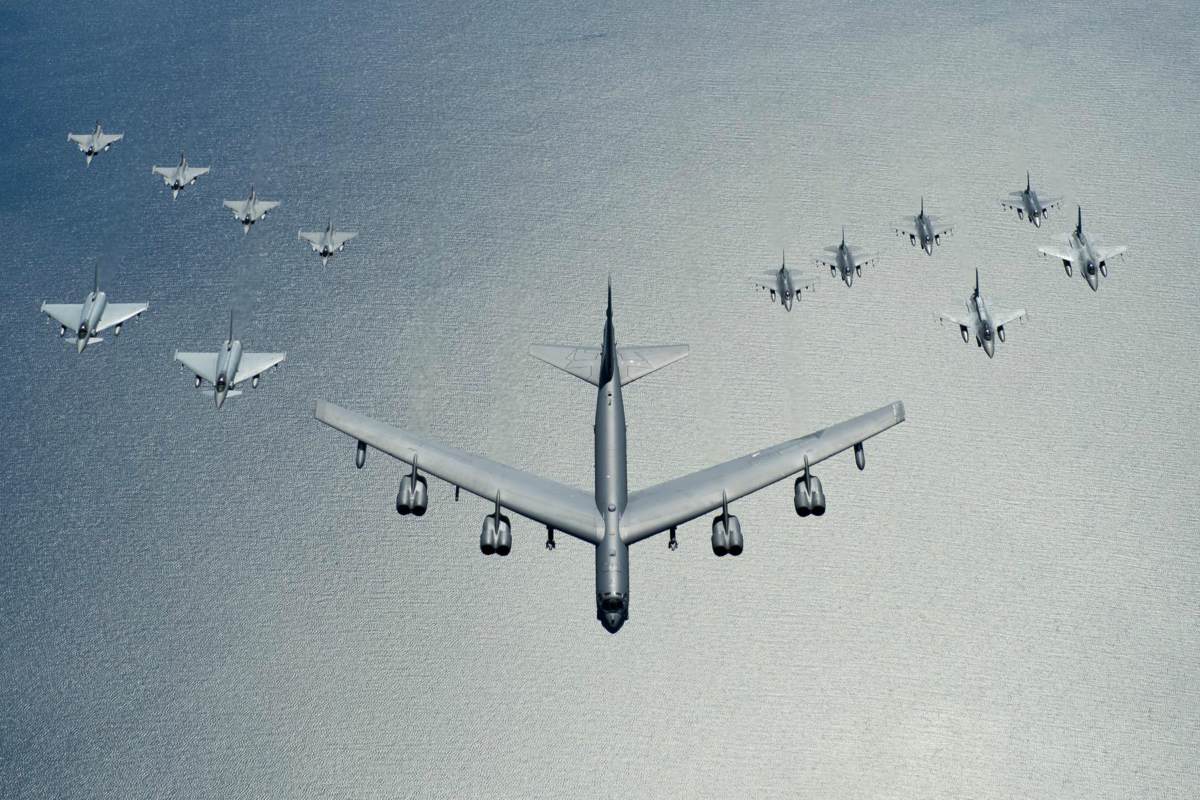
America’s go-to long-range bomber since the 1950s, the B-52 Stratofortress is still going strong for the kinds of mission in which air supremacy has been well established and massive payloads need to delivered on target. The great strength of the B-52 is its range: this modern military aircraft can fly close to 9,000 miles without refueling.
Over the course of its design – the initial contract bid was awarded in 1946 – the B-52 underwent many changes. It made the shift from a straight wing to a swept wing design. While the B-52 is incapable of supersonic flight, its stellar performance at high subsonic speeds and extremely low maintenance and operational costs. Having taken part in every major military operation from the Vietnam War to the present, the B-52 is going to remain a fixture of US military air power.
Rockwell B-1 Lancer
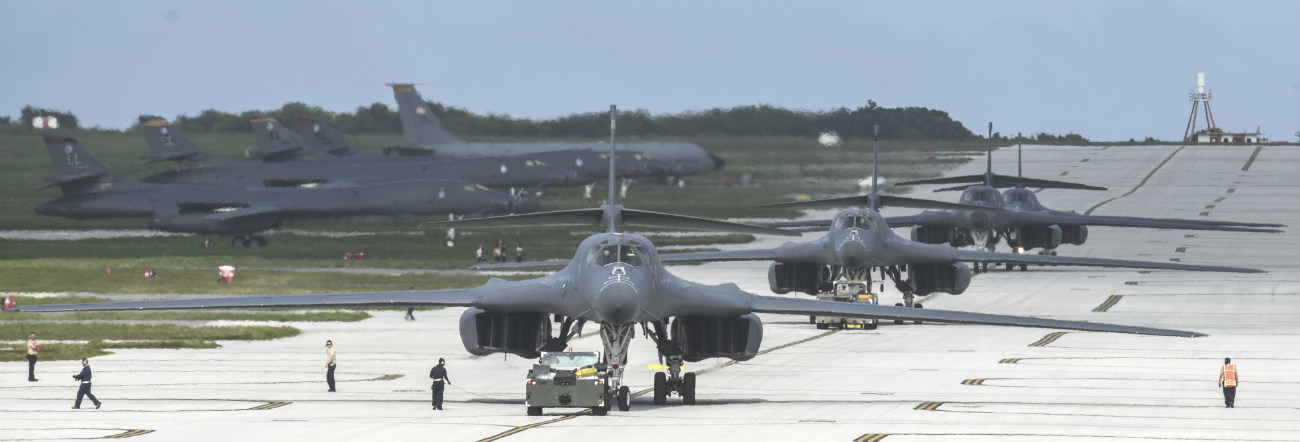
Another US strategic bomber, the Rockwell B-1 Lancer is a variable-wing supersonic bomber designed for strategic strikes against enemy targets. It came into being during the 1960s as a replacement or supplement for the B-52 Stratofortress, which lacked supersonic capability.
The B-1 Lancer, affectionately referred to as the “Bone” by its operators, found itself caught in an awkward phase of aviation development. The B-1 came along after the age of subsonic bombers but before the full adoption of stealth design in aviation. Despite this, it entered service in 1986 as a nuclear bomber and has remained active in a variety of roles since then.
The variable wing design gives it a lot of flexibility, and the four General Electric F101 augmented turbofan engines deliver power and true supersonic speed—Mach 1.25 or more. The payload is impressive: up to 75,000 pounds of ordnance depending on the mission. While not a high-speed stealth bomber, the B-1 Lancer is still formidable.
Xian H-6
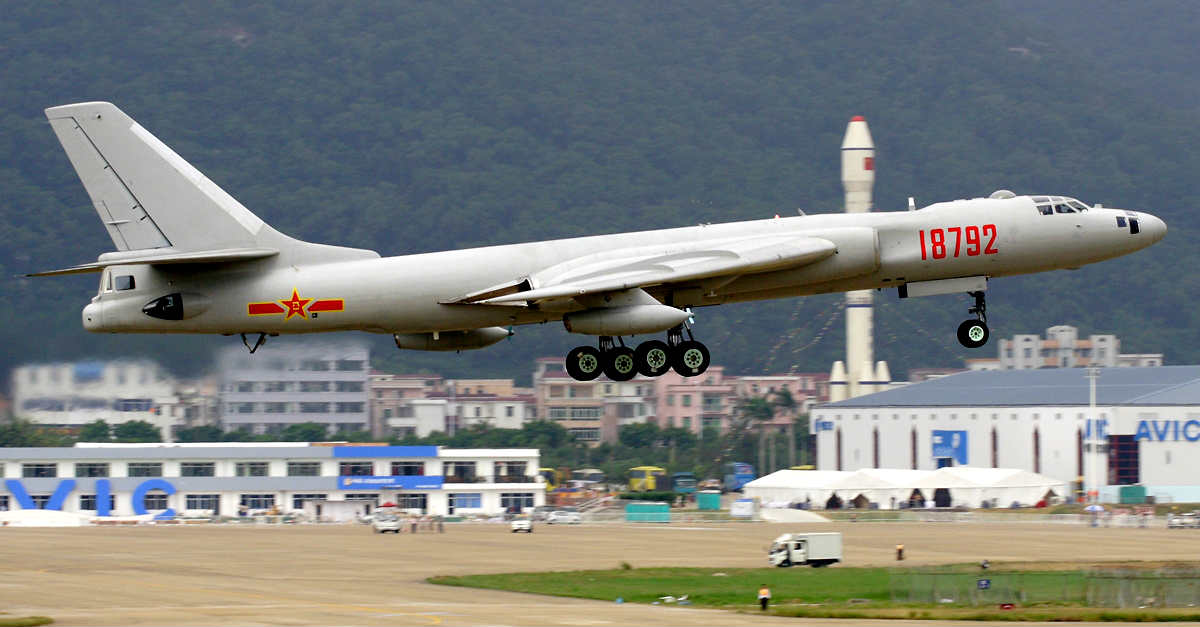
A license-built version of the Tupolev Tu-16 twin engine jet bomber, the Xian H-6 is China’s home-produced bomber and an effective entry into the “best bomber” category for its time.
Somewhere between 160 and 180 of these modern military aircraft have been built since production began at the Xian Aircraft Industrial Corporation in 1968. While the overall design has remained consistent, the systems contained within the airframe have undergone several upgrades. A series of improvements was implemented in 2007 to improve avionics, on-board computers, target and tracking, and overall performance. As the H-6 has evolved, more composite materials have been used in its construction in order to reduce its radar profile. While not truly stealth-capable, the H-6 has a relatively narrow radar profile. It can successfully evade detection systems in place throughout the region. As of 2015, there were an estimated 15 H-6s and variants in service throughout China, with more having been sold on the export market.
Tupolev Tu-22M (NATO Reporting Name: Backfire)

A long-standing Russian strategic bomber/maritime strike bomber, the Tupolev Tu-22M has been in service since 1967. Nearly 500 of them have been built since then. 100 of those are in active use by the Russian military—and it’s easy to see why when you look at the numbers. Operated by a crew of four, the Tu-22M is powered by two Kuznetsov NK-25 turbofan engines. These engines deliver enough power to ensure a top speed of Mach 1.88 or more with a range of around 4,000 miles depending on mission and payload.
One of the few bombers still incorporating defensive armament, the Tu-22M has a 23mm GSH-23 cannon mounted in a remote-controlled tail turret. The heavy lifting for weapons is done by its ordnance payload of over 50,000 pounds, which can be affixed to any of a dozen hardpoints located on various places on the aircraft. So while this bird is getting a bit older, it’s still a high-speed strategic bomber with a serious role to play.
Tupolev Tu-95 (NATO reporting name: Bear)
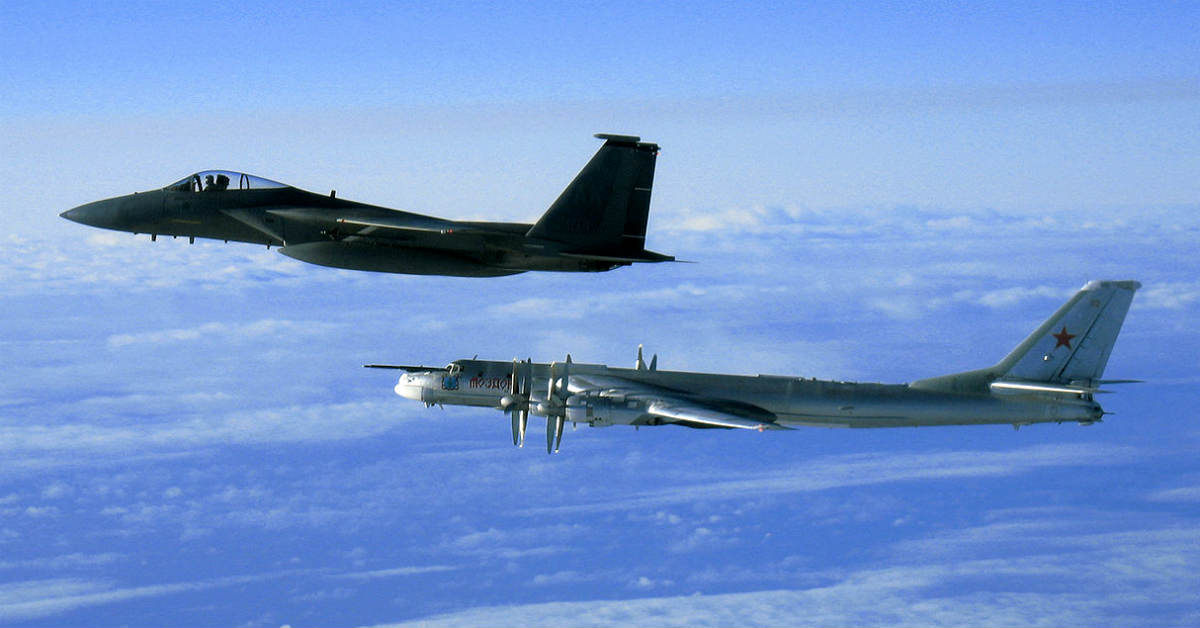
Another subsonic bomber with proven performance, inexpensive operation, and flexible design – the Tupolev Tu-95 Bear. The Tu-95 is a turboprop strategic bomber that can also function as an airborne surveillance or reconnaissance aircraft depending upon its configuration. The Bear was introduced in 1956 and Russian officials expect it to remain in service until at least 2040. Its distinctive swept-wing design supports four Kuznetsov NK-12 engines. The Tu-95 is capable of a top speed of 516 miles per hour and a range of well over 8,000 miles. Combined with a payload of either bombs, missile systems or autocannons, Tu-95 is able to hold its own against any aircraft of its time and remains a competitive presence in the Russian Air Force now.
Northrop Grumman B-21 Raider
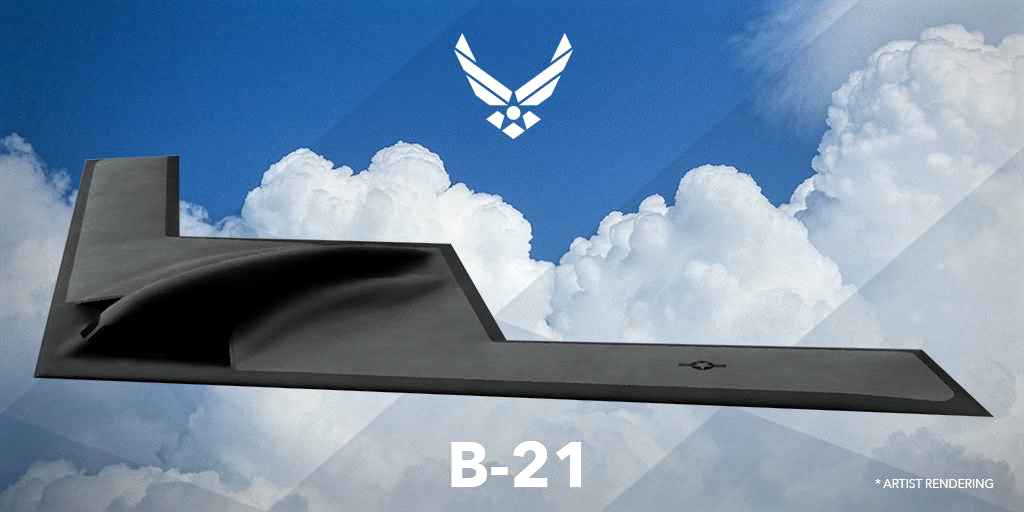
This modern military aircraft is still under development, which limits what we know. However, the Northrop Grumman B-21 Raider is already raising eyebrows as it pushes the limits of what we expect out of strategic bomber aircraft. The project is the brainchild of the United States Air Force in their quest to maintain the edge they developed in bombers’ during the Cold War.
Named in honor of the Doolittle Raiders of World War II fame, the B-21 is excepted to be a long-range strategic stealth bomber capable of delivering conventional or nuclear payloads at ranges far beyond any current operational aircraft. However, the design is flexible and the B-21 is intended to fill a variety of roles on the modern networked battlefield. These roles include intelligence gathering, signals interception, battle management, and perhaps an interceptor/attack role. Speculation abounds and the aircraft is still in development, but we have a feeling that Northrop Grumman is about to deliver something big.
Westland WG-13 Lynx

A multi-purpose military helicopter built by Westland Helicopters for service with the British Armed Forces, the WG-13 Lynx/Super Lynx was another aircraft that outstripped its original design goals and took on a much more diversified role. First adopted for active service in 1978, the Lynx has stuck around due to its unmatched performance and versatility.Perhaps the most nimble military helicopter – the Lynx was the first fully aerobatic rotary wing aircraft, capable of performing true loops and rolls – the WG-13 is also the fastest, holding the FAI speed record for a helicopter at just shy of 250 miles per hour. Currently, its military service includes a number of different roles, including battlefield utility, anti-armor functions, search and rescue missions, and anti-submarine operations. Currently undergoing an upgrade to a modernized variant, the Lynx will remain a part of the UK’s arsenal for the foreseeable future.
MD Helicopters MH-6 Little Bird
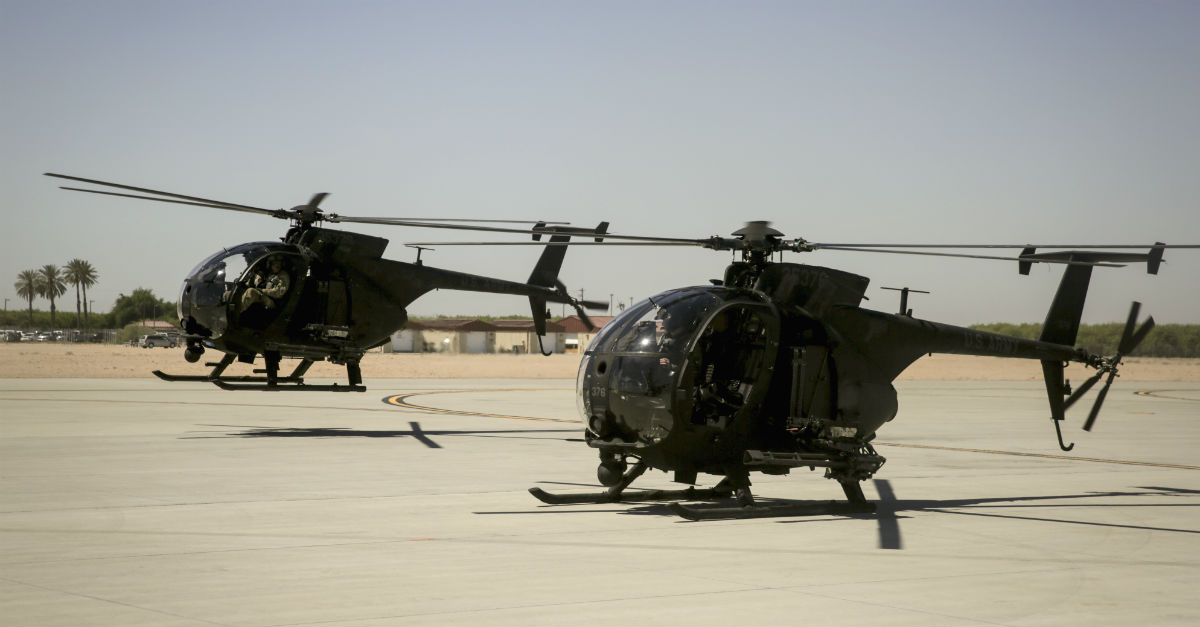
This military helicopter may, in fact, be small and the name might sound downright cute, but don’t let that fool you—the MH-6 Little Bird can deliver when it counts. It was originally designed as a light observation helicopter for battlefield reconnaissance, limited personnel transport, and casualty evacuation. The Little Bird quickly became a favorite among the special operations community due to its nimble design, ease of operation, versatility, and overall toughness.
From its first combat operations in the 1980 through the Global War on Terror, the MH-6 Little Bird has proven again and again that it has what it takes to get SPECOPS units where they’re needed quickly and quietly. Operated by a crew of two, the Little Bird is powered by a single turboshaft engine with delivers enough power for a top speed of 175 miles per hour and an effective range of 267 miles. Able to be equipped with any of a number of weapons systems or guns, this Little Bird packs a big punch when it needs to.





